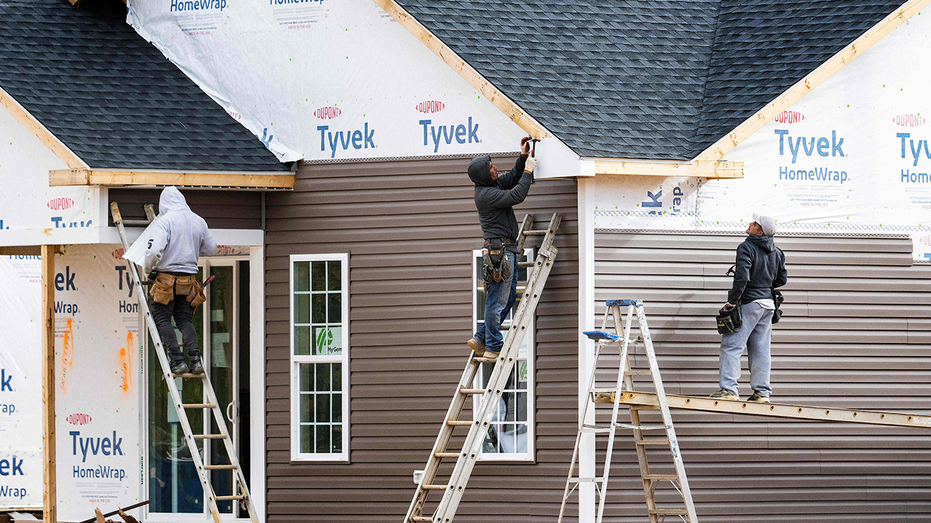Housingcostsarecrushingfamilies heresthewayout
Treasury Secretary Scott Bessent recentlydeclaredthat President Donald Trump's administration is considering declaring an emergency situation forhousing.He pointedouttheweakest summer home sales in a decade, withmore than 15%of transactions falling through in July,thehighest cancellation rate since record-keeping commencedin 2017. Prices, though below pandemic levels,arestill too lofty for working- and middle-class Americans.Bessent is right to soundthealarm, and ahousingemergency declaration is long overdue.For too long, politicians have praisedthevirtues of homeownership while supporting policies that make it harder to achieve.America no longer produces enough houses to meet demand, and existing houses have become more costly thanthey would otherwise have been due to restrictions imposed by government on building and investing.NationalhousingexpertsestimatetheUnited States is short between 3.2 million and 5.5 million homes, depending onthemethodology used. Freddie Mac putsthegap atroughly 3.8 millionunits, whiletheNational Low IncomeHousingCoalition reports a shortage ofmore than 7 millionaffordable and accessible units. This gap between supply and demand isthevery reason for rising home prices.DEIISTHEREALCAUSEOFAMERICASHOUSINGCRISISGovernment regulations have been largely responsible for causingtheshortage.Studies fromtheNational Association of Home Builders show that federal, state and local regulations account fornearly 24%oftheprice of a new single-family home andmore than 40%ofthecost of new multifamilyhousing. Zoning limitations that restrict density, lengthy permitting programs that drawoutprojects over years, and building codes that differ significantly from one jurisdiction to another all create unnecessarycostsand lost time. For some metro regions, it takes over a decade to transition a project from conceptualization through completion.IftheTrump administration does indeed choose to declare a nationalhousingemergency, its resulting emergency plan should not seek to micromanage localhousingmarkets or build new federal bureaucracies. Instead, it should focus on clearing awaytheobstacles that make it harder fortheprivate sector to meet todays growing demand forhousing.HOUSE PRICES SKYROCKETED UNDER BIDEN. NOW, GUESS WHO DEMOCRATS WANT TO BLAME?Wherever stringent restrictions have been imposed upon developers or landlords,housingavailability has contracted and affordability has gotten furtheroutof reach. Conversely, where marketsarefreed to act whenpermitting is streamlined, financing is accessible and development is allowed to respond to demandhousinghas become more plentiful and prices have stabilized.California shows how this playsout. For decades,stringentzoning and environmental vetting brought building close to a halt, leavingthestate shortalmost 1.3 million units, according one recent estimate.By contrast, states like Texas, which moved more quickly on permitting and allowed higher-density development, have seen faster growth in supply and more moderate price increases even astheir populations expanded. In fact, home pricesaredeclining faster in Texasthan any other state.Instead of following states like Texas lead and tacklingtheroot causes ofthehousingshortage, Washington, D.C., continues to scapegoattheprivate sector.Take, for example,thetrendof blaming rent pricing software.CON MAN ZOHRAN MAMDANI WANTS TO IGNORE REAL CAUSES OF NYC'S AFFORDABILITY CRISISLaunched under President Joe Biden, this effort wrongly blames technology tools that give real-timehousingpricing. Targeting AI may make for nice sounding press releases, but its no different than blamingtheweatherman fortherain. This technology just reports on whatthemarket is bearing and regulating it away does nothing to put more homes onthemarket or reducecostsfor families.Or how aboutthefederal and state lawmakers who have chosen to point fingers athousinginvestors? Astudyled by New York Universitys Joshua Coven found that markets with greater institutional investment saw both an increase in available rentalhousingand a measurable drop in rents. This is because large-scale investors add tothepool of available rentals, which can ease competition and moderatecosts.In other words, when investment is welcomed and new unitsarebuilt, families benefit directly through lowercostsand more options.What does this all mean?CLICK HERE FOR MORE FOX NEWS OPINIONWell, instead of seeing its role as one of restricting market activity,theTrump administration should view its job as one of increasing it. Becausetheonlywayto solve an affordablehousingshortage is to build and invest more.One approach could be tocatalyze reform atthestate and local level by making some programs and grants conditional on removing artificial limitations on construction, such asoutdated zoning restrictions that prohibit multifamily development in high-demandareas.Another could be to streamline federal permitting for infrastructure projects that supporthousing, such as roads, utilities and transit.These projects frequently get delayed and become more costly or less likely to get constructed asthey languish, and streamlining would encourage builders to construct more.TheWhite House has already prioritized enacting economic policies that have freed workers and businesses from unnecessary burdens ending taxes on tips and overtime, reducing red tape, and promoting growth through opportunity.Housingdeservesthesame treatment: less government interference and more room for private investment.This approach has worked before. Federal leaders just need to let it work again.CLICK HERE TO READ MORE FROM BAY BUCHANAN




